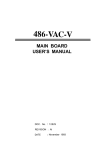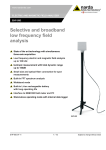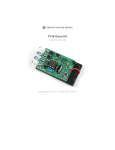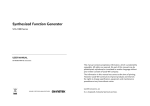Download MicroVGA-TEXT Datasheet - Micro VGA: Cost
Transcript
MicroVGA-TEXT Datasheet – http://www.microvga.com/ - page 1 / 10 MicroVGA - Device Overview MicroVGA is low-cost Microcontroller to VGA interface providing 80x25 16 color text mode (physical resolution is 800x600 at 60 Hz). MicroVGA is connected to a MCU via 2 or 4 wire RS-232 TTL or LVCMOS compatible interface. Display is controlled using ANSI terminal codes (such as cursor movement, colors, etc). In addition to VGA output the interface provides also NTSC/PAL signal output for television viewing and PS/2 keyboard input. This makes the MicroVGA an ideal solution for user interface in embedded applications. The MicroVGA is a complete user interface module, 3-in-1 functions. MicroVGA can be connected to any MCU with UART, such as Microchip PIC (including PICmicro, PIC16 and dsPIC33), Atmel ATmega, 8051, ARM, MIPS, or even PowerPC. Key features • • • • • • • Provides 80x25 color text mode SVGA output 800x600@60Hz resolution (font 22x10) S-Video television output – PAL (font 11x10) S-Video television output – NTSC (font 9x10) Automatic selection of TV or VGA output PS/2 keyboard input (MiniDIN-6) Easy connection to almost every • • microcontroller using only 2 wires (minimum, 4 recommended for handshaking) Very easy to use: works like standard ANSI (or VT100) terminal 6 supported character sets (US-ASCII and ISO8859-1 through ISO8859-5) with full internationalization support! Table of Contents MicroVGA - Device Overview.................................1 Key features..........................................................1 System description....................................................2 TV/VGA output selection.....................................2 UART Bypass mode.............................................2 MicroVGA Communication.................................2 ANSI Commands.................................................2 Internal watchdog.................................................2 SPI Signal Pin Description...................................2 Pinouts.......................................................................3 System connector.................................................3 VGA.....................................................................4 PS/2 Keyboard – MiniDIN6.................................4 TV Output (S-Video) – MiniDIN 4......................4 TV Output (S-Video) – Cinch..............................5 Part Numbers............................................................5 Typical applications..................................................5 Typical setup........................................................5 Test setup..............................................................5 VGA Timing..............................................................6 General timing......................................................6 Horizontal timing (line)........................................6 Vertical timing (frame).........................................6 TV/PAL Timing.........................................................7 TV/NTSC Timing.....................................................7 PS/2 Keyboard Timing..............................................7 SPI Communication Diagram...................................8 Mechanical Dimensions............................................9 Electrical Characteristics........................................10 On-Line Support.....................................................10 Copyright © 2008,2009 SECONS s.r.o., http://www.secons.com/. Information contained in this publication regarding device applications and the like is intended through suggestion only and may be superseded by updates. It is your responsibility to ensure that your application meets with your specifications. No representation or warranty is given and no liability is assumed by SECONS s.r.o. with respect to the accuracy or use of such information, or infringement of patents or other intellectual property rights arising from such use or otherwise. Use of SECONS products as critical components in life support systems is not authorized except with express written approval by SECONS. No licenses are conveyed, implicitly or otherwise, under any intellectual property rights. Neither the whole nor any part of the information contained in, or the product described in this manual, may be adapted or reproduced in any material or electronic form without the prior written consent of the copyright holder. MicroVGA-TEXT Datasheet – http://www.microvga.com/ - page 2 / 10 System description MicroVGA reads data from UART (serial port) or SPI interface and displays them on a VGA/TV. All keyboard activity is sent via UART or SPI. TV/VGA output selection MicroVGA displays on VGA port by default, however MicroVGA automatically detects the presence of connection to a television or other SVideo/S-VHS device. Presence is detected by checking cable termination at television side (75Ohm). When a television is connected, VGA port is disabled and only S-Video signal is generated. Please note that television is detected even if turned off. TV output may be disabled in MicroVGA setup. PAL or NTSC mode selection is configurable using MicroVGA setup. The TV output configuration is stored in a non-volatile memory. UART Bypass mode The UART interface for MicroVGA while the module is de-asserted (CS#=1) is directly wired to secondary UART. This will allow the user to connect other devices onto the physical UART bus. MicroVGA Communication program (see MicroVGA-TEXT user manual for more information). ANSI Commands MicroVGA is controlled using VT100-compatible ANSI escape sequences. More information can be found in MicroVGA-TEXT User's Manual or MicroVGA conio library and demo projects. Internal watchdog In case of internal error, communication error, or voltage drop, MicroVGA contains internal watchdog which automatically resets MicroVGA. The internal state (cursor position, color, etc) is retained. SPI Signal Pin Description The SPI module is compatible with Motorola’s SPI and SIOP interfaces. Signal Data Output (SO) SO is used to transfer data serially out of the SPI device. Data is shifted out on the falling edge of the serial clock. Signal Data Input (SI) SI is used to transfer data serially into the SPI device. Data, instructions and addresses to be programmed are latched on the rising edge of the serial clock. Serial Clock (SCK) MicroVGA reads data from UART port when CS#=0 and displays them on a VGA/TV. All keyboard activity is sent via UART when CS#=0 and CTS#=0. SCLK is an input signal that provides the necessary timing for the serial interface. Data are latched on the rising edge of SCLK, while data present on the SO changes after the falling edge of SCLK. Communication speed depends on MicroVGA settings. Default value is 1 000 000 bits/s (1Mbit). UART is always using 1 start bit, 8 data bits, no parity bit, 1 stop bit (8N1). Chip Select (CS#) Available baud rates are: 9600, 19 200, 38 400, 57 600, 115 200, 500 000, 1 000 000, 1 250 000. The baud rate configuration is stored in a non-volatile memory and is configurable using built-in setup Chip ready (RDY#) When CS# is high, the SPI device is deselected and SO is at high impedance. When CS# is low, the SPI device is enabled and in the active power mode. When RDY# is low, MicroVGA is ready for SPI communication. MicroVGA-TEXT Datasheet – http://www.microvga.com/ - page 3 / 10 Pinouts In addition to connectors specified below, MicroVGA also has “system setup” pad. When this pad is short-circuited, the built-in setup tool is invoked. System connector Pin Signal Direction Description 1 GND - Ground 2 +5V - 5V input 3 +3V3 - 3.3V regulated output 4 CS# IN Chip select 5 RXD SCK IN UART Receive, data to be displayed on monitor (SPI mode: clock) 6 TXD RDY# OUT UART Transmit, keyboard output (SPI mode: MicroVGA ready signal, active low) 7 RTS# SO OUT UART Request to send signal (active-low) (SPI mode: master-in, slave-out) 8 CTS# SI IN UART Clear to send signal (active-low) (SPI mode: master-out, slave-in) 9 INT OUT Reserved for future use, do not connect 10 SYSRQ OUT * System-Request output (SysRq key), open-drain 11 RXD2 OUT UART-bypass mode RxD PIN 12 TXD2 IN UART-bypass mode TxD PIN 13 RESET# IN Reset signal 14 NC Not connected, reserved for future use 15 NC Not connected, reserved for future use 16 NC Not connected, reserved for future use 17 NC Not connected, reserved for future use 18 NC Not connected, reserved for future use 19 NC Not connected, reserved for future use 20 NC Not connected, reserved for future use * SYSRQ is open-drain output, pull-up resistor is required MicroVGA-TEXT Datasheet – http://www.microvga.com/ - page 4 / 10 VGA Pin Symbol Name 1 RED Red video component 2 GREEN Green video component 3 BLUE Blue video component 4 N/C 5 GND Ground (HSync) 6 RED_RTN Ground (Red) 7 GREEN_RTN Ground (Green) 8 BLUE_RTN Ground (Blue) 9 +5V VDC +5V DC 10 GND Ground (VSync) 11 N/C 12 SDA I2C Data 13 HSYNC Horizontal Sync 14 VSYNC Horizontal Sync 15 SCL I2C Clock PS/2 Keyboard – MiniDIN6 Pin Symbol Name 1 DATA Data 2 N/C 3 GND Ground 4 VCC +5V DC 5 CLK Clock 6 N/C TV Output (S-Video) – MiniDIN 4 Pin Symbol Name 1 GND Ground (Y) 2 GND Ground (C) 3 Y Intensity (Luminance) 4 C Color (Chrominance) Note: C signal is connected to GND in MicroVGA-TEXT, only Y is provided. MicroVGA-TEXT Datasheet – http://www.microvga.com/ - page 5 / 10 TV Output (S-Video) – Cinch Pin Symbol Name 1 VIDEO Video Signal 2 GND Ground (VIDEO) Note: Video signal contains only intensity (Luminance) information. Part Numbers Product Ordering Codes: Code Description UVGA-TEXT1-S MicroVGA Module with VGA HDF-15, S-Video Mini-DIN4 and keyboard connector Other variants are possible for high volume orders. Typical applications Typical setup The above diagram shows typical connection to a microcontroller. Please note that MicroVGA TXD pin has to be connected to RXD of the microcontroller, RXD to MCU TXD, CTS to MCU RTS and RTS to MCU CTS. Handshaking signals (CTS#/RTS#) can be software-emulated if no silicon support for UART handshaking is provided. Test setup Micro-VGA-TEXT can be tested very easily. It should start working immediately after connecting power supply to pins 1 and 2 of system connector (GND, +5V). When power supply is applied and other pins are left unconnected, MicroVGA header is displayed on TV or VGA port. MicroVGA-TEXT Datasheet – http://www.microvga.com/ - page 6 / 10 VGA Timing VGA Mode is SVGA standard 800x600 @ 60 Hz, 37kHz, horizontal and vertical synchronization is positive. General timing Screen refresh rate 60 Hz Vertical refresh 37.8 kHz Pixel freq. 40.0 MHz Horizontal timing (line) Scanline part Visible area Front porch Sync pulse Back porch Whole line Pixels Time [µs] 800 20 40 1 128 3.2 88 2.2 1056 26.4 Vertical timing (frame) Frame part Visible area Front porch Sync pulse Back porch Whole frame Lines Time [ms] 600 15.84 1 0.0264 4 0.1056 23 0.6072 628 16.5792 MicroVGA-TEXT Datasheet – http://www.microvga.com/ - page 7 / 10 TV/PAL Timing PAL TV output signal is non-interlaced (progressive) B/G PAL. One of the advantages of a non-interlaced mode is that it is flicker-free. Since all fields (and their scan lines) get drawn on the same location, there is no interlace flicker. The image is very stable and clear compared to standard interlaced mode. Symbol Parameter Typ. value Units TFRAME Frame time 19.9 ms TLINE Nominal line period 64 μs TLONGSYNC Long sync time 30 μs TSHORTSYNC Short sync time 2 μs TSYNC Normal sync time 4 μs TBACKPORCH Back Porch time 8 μs NLINES Number of lines per frame 625 lines NVLINES Video lines 6 - 309 lines PAL mode is configured by default and is preferred over NTSC if possible. TV/NTSC Timing NTSC TV output signal is non-interlaced (progressive) NTSC. Like in PAL mode, one of the advantages of a non-interlaced mode is that it is flicker-free. Please note that NTSC mode has limited number of visible scan lines, so quality of image is worse compared to PAL. Most of the modern American televisions are capable of displaying “European” PAL signal so it's recommended to use PAL mode whenever possible. Symbol Parameter Typ. value Units TFRAME Frame time 16.6833 ms TLINE Nominal line period 63.5 μs TLONGSYNC Long sync time - μs TSHORTSYNC Short sync time - μs TSYNC Normal sync time - μs TBACKPORCH Back Porch time - μs NLINES Number of lines per frame 262 lines NVLINES Video lines 4 - 229 lines PS/2 Keyboard Timing Symbol Parameter Typ. value Units TCLK Clock 1-17 kHz MicroVGA-TEXT Datasheet – http://www.microvga.com/ - page 8 / 10 SPI Communication Diagram MicroVGA-TEXT Datasheet – http://www.microvga.com/ - page 9 / 10 Mechanical Dimensions Dimension Description A Module height 1.380 35.052 B Module width 2.500 63.500 a1 Mounting hole distance 0.115 2.921 a2 Mounting holes 0.680 17.270 a3 Mounting hole distance 0.585 14.859 a4 System connector drill position 0.095 2.413 b1,b4 Mounting hole distance 0.125 3.175 b2,b3 Mounting hole-to mid of connector 1.437 36.437 R1 Mounting hole diameter 0.118 3.000 R2 System conn. drill diameter 0.0138 0.350 -- System connector pitch 0.100 2.54 A = a1+a2+a3, B = b1+b2+b3+b4 Value [in] Value [mm] MicroVGA-TEXT Datasheet – http://www.microvga.com/ - page 10 / 10 Electrical Characteristics Symbol Parameter Min Max Typ. Units VCC Supply voltage 4.5 5.5 5.0 V VCC33 3.3V Output 3.2 3.4 - V IMAX33 3.3V Ouput max. current output - 400 - mA Vih Low-level input voltage 2.0 5.5 - V Vil High-level input voltage 0 0.80 - V Voh* Output high voltage 2.4 - - V Vol* Output low voltage - 0.4 - V IKBD Keyboard current (VCCKBD = VCC, unfused) - 200 - mA VESD Electrostatic Discharge (ESD) 2000 - - V Tdr Data retention 20 - - Years VTVBLANKING TV signal output blanking voltage - - 0.3 V VTVCOLOR TV signal output color voltage 0.3 1.0 - V VVGA VGA signal output voltage (R, G, B) 0 0.7 - V * Applies both to I/O pins and VGA synchronization signals (HSYNC, VSYNC) On-Line Support Documentation is available at http://www.microvga.com/docs (datasheets, user manual, application notes). MicroVGA conio library and reference projects are available from http://www.microvga.com/conio-lib .










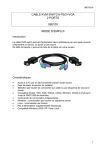

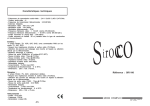
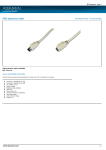
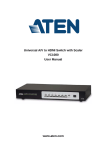

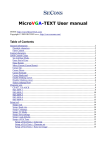
![HiSoft Devpac 3 (text version) [1992] [Manual: PDF]](http://vs1.manualzilla.com/store/data/005668901_1-67cf8256fc448cd2edf58a11a6ec729e-150x150.png)
